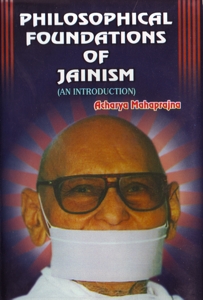The Jīva is amūrta i.e., non-corporeal, and hence, not perceptible to eyes, whereas the body is mūrta, i.e., corporeal, and hence, it is visible. So what relationship could be there between them?—Such questions have been subject of intense discussions in the philosophical parleys. The Bhagavatī Sūtra (a Jain canonical text) tries to answer these questions. Once Gautama asked Mahāvīra - "Does a celestial being who possesses the protean powers has the capacity to create the non-corporeal objects?" Lord Mahāvīra replied—'No'. Gautama again asked—'why can't he produce a formless object, if he has the power to adopt any shape that he chooses?' The Lord said, "I know this for certain, through my own realizations, that a corporeal Jīva can not produce anything which is non-corporeal."
'Sāṅkhya' regards Jīva as absolutely non-corporeal, and therefore, the manifestation in any shape is supposed to be the attribute of Prakṛti. But Jains do not accept this theory. They believe that Jīva is mūrta as well as amūrta. It is mūrta (corporeal) because it is associated with karma, rāga, (attachment) moha (delusion), leśyā (psychic colour), śarīra and veda (libido). Jīva is also associated with pudgala and so it has varṇa (colour), gaṅdha (smell), rasa (taste) and sparśa (touch), which are the attributes of pudgala. The fact that attributes like colour etc. can be found even in the Jīva, which is by nature non-corporeal, can be explained by the philosophy of anekānta. This is not possible in any other philosophical view except Jainism, for anekānta is not acceptable to other philosophical views. On the basis of anekānta only, the Jain philosophy accepts that there are many attributes which are identical in Jīva and pudgala. It is only on the basis of this fact, that Jīva and pudgala can influence each other and also they can interact with each other.
In 'Leśyā Dhyāna' (which is a meditational technique) colour visualization is used, since colour in its very subtle form is found in the Jīva, its psychic centres (Chaitanya Kendras) and the soul-units. These colours have different effects on our body-physique and psyche.
There is non-absolutistic identity as well as difference in Jīva and pudgala. Hence, the Jīva possesses both attributes sarūpa as well as arūpa. A question would naturally arise how can sarūpa get itself transformed and become arūpa? The answer is that this transformation takes place through the process of 'saṃvara' (inhibition of new bondage of karma) and Nirjarā (annihilation of the accumulated karmas). The arūpa Jīva become sarūpa only because of its association with karma).
Modem Psychology has also grappled with this paradoxical question—if body and mind are separate entities, how do they interact? Once again, it is only through the doctrine of Anekānta that such riddles could be resolved. Anekānta says 'Jīva' is 'Mūrtāmūrta'. It is non-corporeal by nature, but when Jīva (soul) is in bondage, it does adopt a shape. So both attributes do apply to the soul.
 Acharya Mahaprajna
Acharya Mahaprajna

